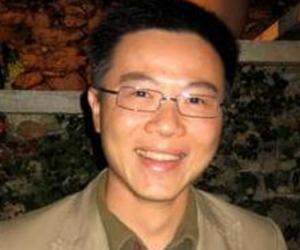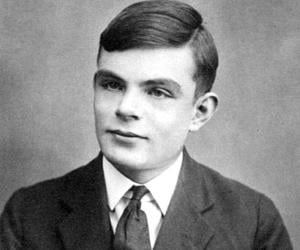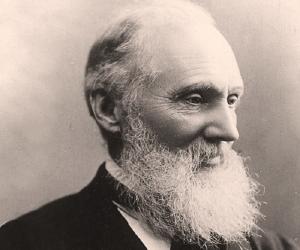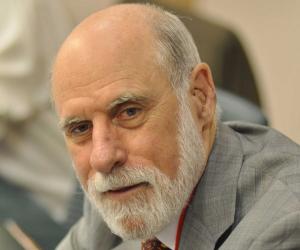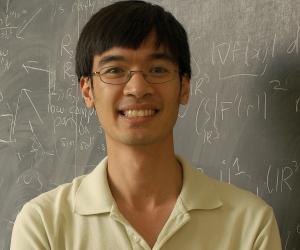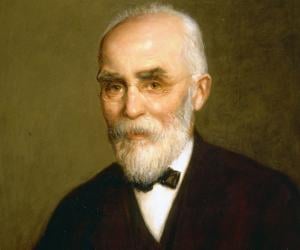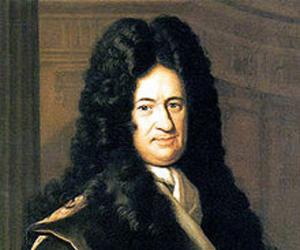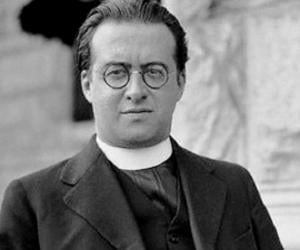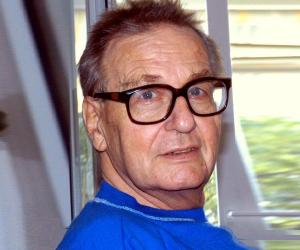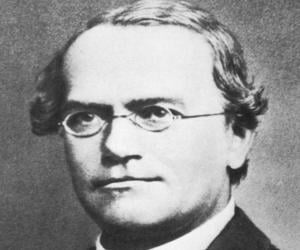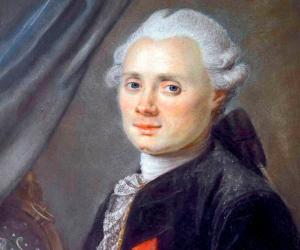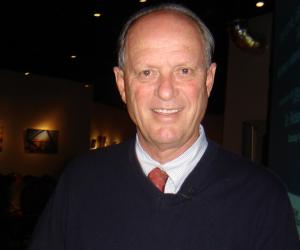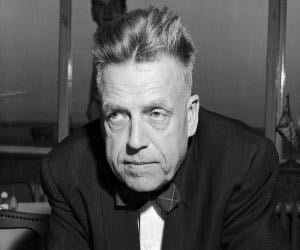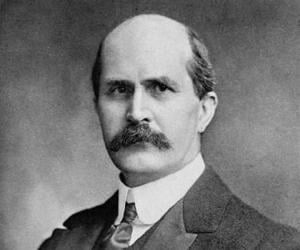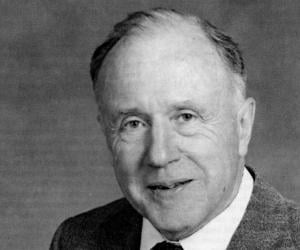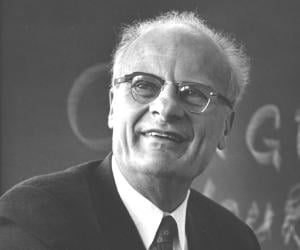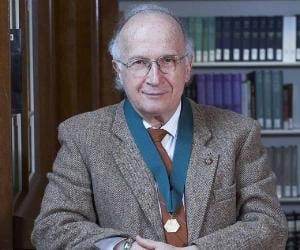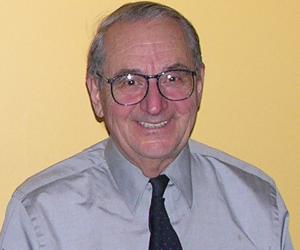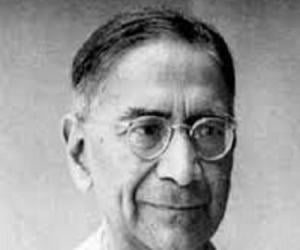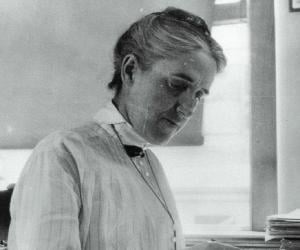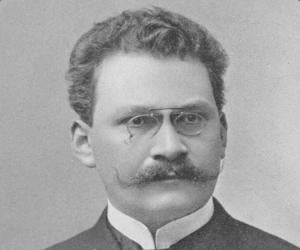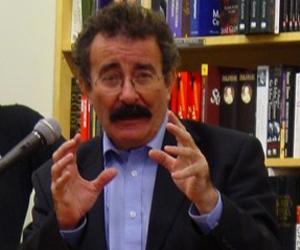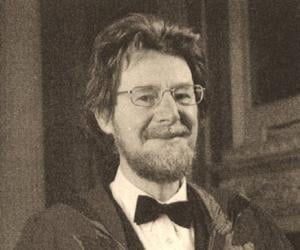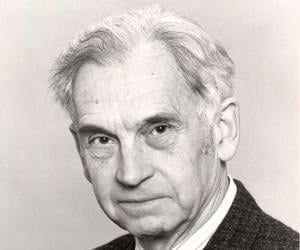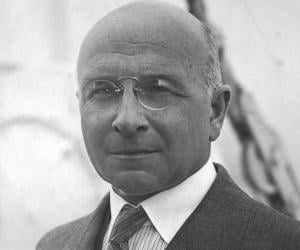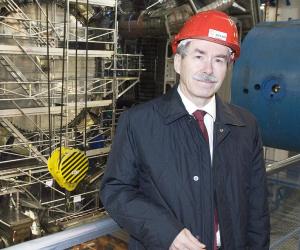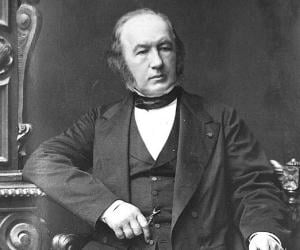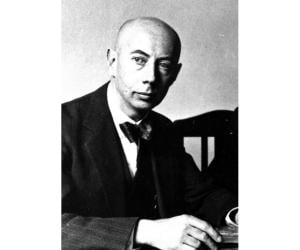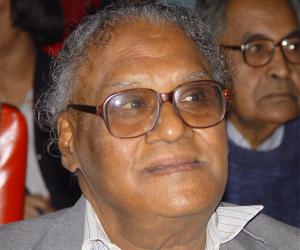Regarded as the father of computer science and artificial intelligence, Alan Turing was a distinguished mathematician and logician. During WWII, he successfully broke the challenging German Enigma machine codes thereby reducing the duration of war by a couple of years. The scientist, who was convicted for being gay, has been an inspiration for numerous films, plays and novels.
Lord Kelvin was a British mathematical physicist and engineer. He studied at the Glasgow University and proceeded to teach there as well. Besides his academic career, he also had a career as an electric telegraph engineer and inventor. He received the Royal Society's Copley Medal in 1883. Absolute temperatures are stated in units of kelvin in his honor.
Terence Tao is an Australian-American mathematician who works at the University of California, Los Angeles as a professor of mathematics. Widely considered one of the most prominent living mathematicians, Tao was honored with the prestigious Fields Medal in 2006. In 2014, he was awarded the Breakthrough Prize in Mathematics.
Nobel Prize-winning Dutch physicist Hendrik Lorentz, a major figure of the Second Dutch Golden Age, is remembered for his discovery of the Zeeman effect, along with his former student Pieter Zeeman, who shared the Nobel with Lorentz. His research on electromagnetic radiation prepared ground for Einstein’s special theory of relativity.
Georges Lemaître was a mathematician, astronomer, and professor of physics. Lemaître was the first person to theorize that the expansion of the universe can be used to explain the recession of nearby galaxies. In 1927, Lemaître published the first estimation of the Hubble constant. He also came up with the Big Bang theory to explain the origin of the universe.
Swiss-American physicist and engineer Bernhard Caesar Einstein was better known as the only grandchild of Albert Einstein to have survived beyond childhood. While two of his biological brothers died in infancy, his parents adopted a girl child, too. He grew up to work on night vision and laser technology.
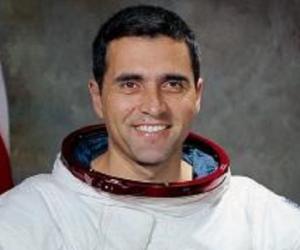
Harrison Schmitt is an American geologist, university professor, and former NASA astronaut. He also served as the US Senator from New Mexico from 1977 to 1983. In 1972, Schmitt became a crew member of Apollo 17 and subsequenly the second-youngest person to walk on the Moon. In 1973, Harrison Schmitt was honored with the NASA Distinguished Service Medal.
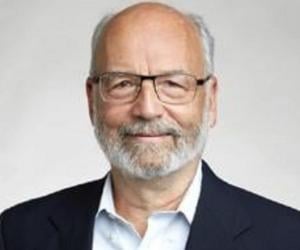
Turing Award-winning Israeli cryptographer Adi Shamir is one of the co-inventors of RSA encryption. He also owns patents to more than a dozen more inventions. He has been associated with the University of Warwick and the Massachusetts Institute of Technology, and has also taught at the Weizmann Institute.
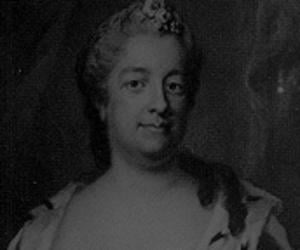
Eva Ekeblad was a Swedish countess, agronomist, salon hostess, and scientist. In 1746, she discovered a method to make flour and alcohol from potatoes which earned her popularity. Her discovery made her the first female inductee of the Royal Swedish Academy of Sciences in 1748.
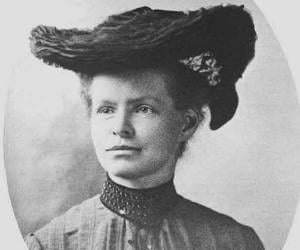
Nettie Stevens was an American geneticist. She is credited with discovering sex chromosomes which later came to be known as the X and Y chromosomes. In 1994, Nettie Stevens was inducted into the National Women's Hall of Fame.
A scientist, meteorologist, mathematician, and biologist, Gregor Mendel is considered the founder of the modern science of genetics. He conducted a series of experiments on pea plants between 1856 and 1863, establishing many rules of heredity. Besides his work on pea plants, he also described novel plant species and conducted experiments with hawkweed and honeybees.
French astronomer Charles Messier is remembered for his pioneering tabulation of nebulae, making it easier to differentiate between nebulae and comets. King Louis XV name him The Comet Ferret. He was drawn to astronomy when he witnessed a solar eclipse and the great six-tailed comet in childhood.
A retired US Navy officer, Robert Ballard is now an oceanography professor, a marine explorer, and an underwater archaeologist, who has discovered countless shipwrecks, including the RMS Titanic and Bismark. He has also discovered hydrothermal vents. His exploration has earned him many honors, such as the Hubbard Medal.
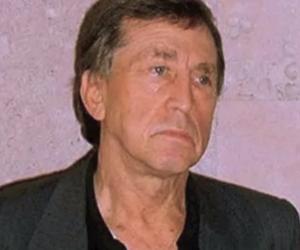
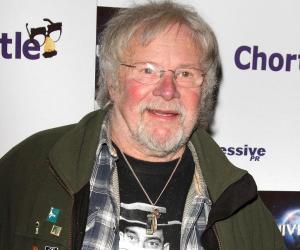
Alfred Kinsey was an American biologist, sexologist, and professor of zoology and entomology. He is credited with founding the Indiana University's Institute for Sex Research in 1947. Kinsey's research on human sexuality and his other works have influenced cultural and social values in the USA as well as internationally. In 2012, Kinsey was inducted into Chicago's Legacy Walk.
William Henry Bragg was an English physicist, chemist, and mathematician. He is best known for sharing the 1915 Nobel Prize in Physics with his son Lawrence Bragg for their work in the analysis of crystal structure by means of X-rays. William Henry Bragg had an illustrious academic career and was elected president of the Royal Society in 1935.
American theoretical-physicist John Archibald Wheeler, who worked as professor of physics at Princeton University for most of his career, is best-known for co-developing the concept of Breit–Wheeler process, popularising the term black hole, and helping in designing and building the hydrogen bomb. He also invented several terms like quantum foam and wormhole, and hypothesized the one-electron universe.
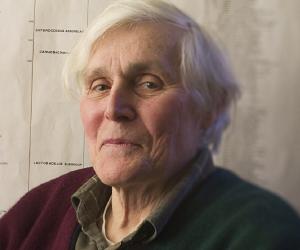
Carl Woese was an American biophysicist and microbiologist. He is credited with originating the RNA world hypothesis as well as pioneering a technique that revolutionized microbiology. In 1992, he was awarded microbiology's highest honor, Leeuwenhoek Medal. In 1995, he was honored with the Selman A. Waksman Award in Microbiology. Carl Woese received the National Medal of Science in 2000.
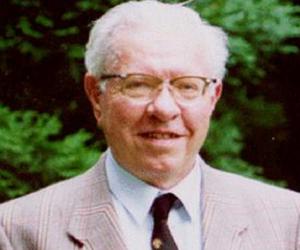
Fred Hoyle was an English astronomer known for his theory of stellar nucleosynthesis. He spent most of his career at the Institute of Astronomy at Cambridge, serving as its director for six years. He was also an author of science fiction novels, short stories, and plays and appeared in a series of radio talks on astronomy for the BBC.
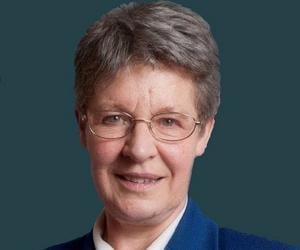
Jocelyn Bell Burnell is an astrophysicist from Northern Ireland. As a postgraduate student, she discovered the first radio pulsars. She graduated from the University of Glasgow and pursued an academic career. In 2018, she received the Special Breakthrough Prize in Fundamental Physics for her discovery of radio pulsars. She donated the three million dollars she received as prize money.
A physiology professor’s son, Hans Bethe had shown immense talent in math as a child. The German-American theoretical physicist and Cornell professor was a pioneer of quantum physics and later won the Nobel Prize for Physics for his research on stellar nucleosynthesis, or the formation of energy in stars.
Best known for conceptualizing the Mahalanobis distance, Prasanta Chandra Mahalanobis was a renowned Padma Vibhushan-winning Indian statistician who played a major role in his country’s industrialization policies of the Second Five-Year Plan. He also taught at his alma, Presidency College, and was one of the founders of the Indian Statistical Institute.
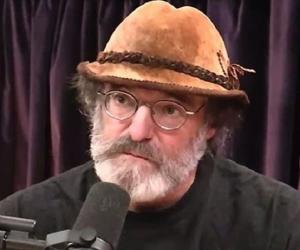
Paul Stamets is an American entrepreneur and mycologist. An ardent supporter of mycoremediation and medicinal fungi, Stamets sells various mushroom products. In 2014, he was honored by the American Association for the Advancement of Science with an Invention Ambassador award. In 2019, he contributed immensely to the creation of a documentary film titled Fantastic Fungi.
Born to a church minister, Henrietta Swan Leavitt grew up to work as a “human computer” at the Harvard Observatory. The American astronomer gained fame for discovering the period-luminosity relation of Cepheid variables. However, her brilliant scientific career was halted by her death due to stomach cancer at 53.
Hermann Minkowski was a mathematician who served as a professor at the University of Göttingen, the University of Königsberg, and the University of Zurich. He is credited with creating and developing the geometry of numbers. He is also credited with using geometrical methods to resolve problems in the theory of relativity, mathematical physics, and number theory.
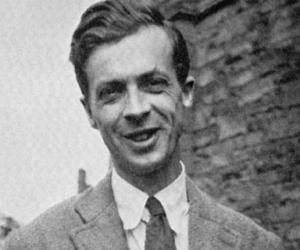
British professor, medical doctor, scientist, television presenter and Labour Party politician Robert Winston is noted for developing gynaecological surgical procedures that improved fertility treatments. He also pioneered different improvements in IVF technology. He was created a life peer in December 1995.
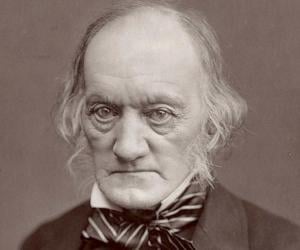
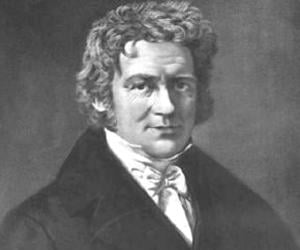
Friedrich Bessel was a German mathematician, astronomer, geodesist, and physicist. He was the first astronomer to use the method of parallax in order to determine the distance of a star from the sun. Bessel was a much-respected figure during his time. He was honored with the Gold Medal of the Royal Astronomical Society.
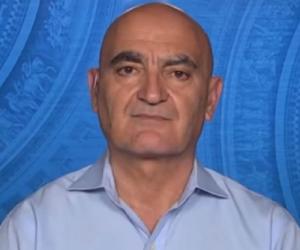
Moroccan-born scientist Moncef Slaoui completed his doctoral studies in Belgium and the moved to the US for further research at Harvard. In his career of almost 3 decades at GlaxoSmithKline, he oversaw the development of many vaccines. He later headed Operation Warp Speed, the US government’s initiative to develop COVID-19 vaccines.
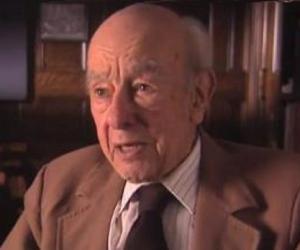
Northern Irish physicist John Stewart Bell is remembered for his contribution to quantum physics with his Bell's theorem. His ability to read voraciously earned him the nickname The Prof in childhood. At 16, he joined Queen’s as a technician since he was too young to be admitted to a course.
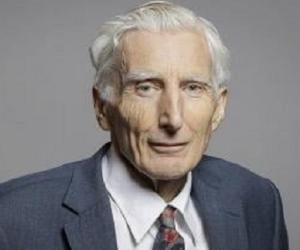
Born to educator parents, Martin Rees excelled in math since childhood. The cosmologist and astrophysicist later taught at Cambridge, Princeton, and Harvard. Known for his research on the big-bang theory, he also won awards such as the Templeton Prize and penned books such as Our Final Century.
Ernst Mayr was a renowned taxonomist, ornithologist, tropical explorer, historian of science, and philosopher of biology. He was also one of the leading evolutionary biologists of the 20th century. His work contributed immensely to the progression of the biological species concept. Ernst Mayr is also credited with originating the modern philosophy of biology, especially the part concerning evolutionary biology.
Gerard ’t Hooft is a Dutch theoretical physicist whose work focuses on black holes, gauge theory, quantum gravity, and quantum mechanics. In 1999, he shared the prestigious Nobel Prize in Physics with Martinus J. G. Veltman. Over the years, Gerard ’t Hooft has also received other prestigious awards, such as the Wolf Prize, Lorentz Medal, Spinoza Prize, and Franklin Medal.
Claude Bernard was a French physiologist whose scientific experiments led to several important discoveries. He is credited with coining the phrase milieu intérieur, which refers to the extracellular fluid (ECF) environment. He also pioneered the use of a blinded experiment to eliminate various experimental biases.
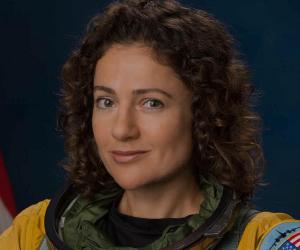
Jessica Meir is an American-Swedish physiologist, marine biologist, and NASA astronaut. She is best known for her studies of the physiology of bar-headed geese and the behavior and diving physiology of emperor penguins. In 2020, Jessica Meir was named in Time magazine's Most Influential People list.
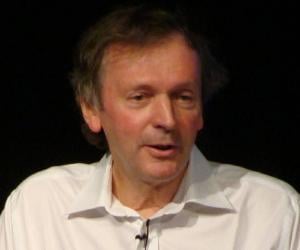
Rupert Sheldrake is an English author best known for his research in the field of parapsychology. He is credited with proposing the concept of morphic resonance, which has been categorized as pseudoscience by mainstream scientists. Rupert Sheldrake is also known for his work encompassing paranormal subjects like telepathy, precognition, and the psychic staring effect.
Gustav Ludwig Hertz was a German experimental physicist best known for his work on inelastic electron collisions in gasses, in collaboration with James Franck. They received the 1925 Nobel Prize in Physics. Hertz worked at the University of Berlin and served in the military during World War I. He was a Member of the German Academy of Sciences.
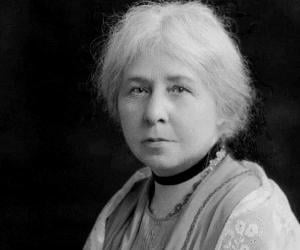
British Egyptologist and anthropologist Margaret Murray was also a scholar of witchcraft. Her best-known work is her 1921 book The Witch Cult in Western Europe, which inspired later witchcraft scholars such as Gerald B. Gardner. The University College London professor had worked in places such as Egypt, Malta, and Petra.
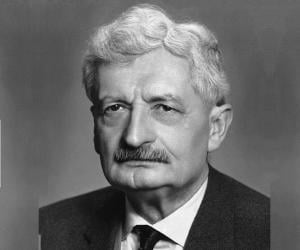
Austro-Hungarian-born German physicist and engineer Hermann Oberth is regarded as one of the founding fathers of astronautics and rocketry along with Konstantin Tsiolkovsky, Robert Esnault-Pelterie, and Robert Goddard. His classic book The Rocket into Planetary Space gained him widespread attention. Oberth garnered a patent for his rocket design and launched his first rocket near Berlin, Germany, on May 7, 1931.
C. N. R. Rao already had a PhD degree at age 24 and became the youngest lecturer at the IISc. The Padma Shri- and Padma Vibhushan-winning Indian chemist is best known for his research on areas such as surface chemistry, superconductivity, and nano technology. He is a self-confessed technophobe.
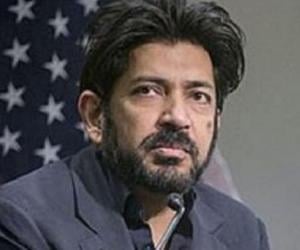
Best known as the author of the Pulitzer Prize-winning book The Emperor of All Maladies and the New York Times bestseller The Gene, Siddhartha Mukherjee is an Indian-American oncologist and a Columbia University professor. He is also a former Rhodes scholar, a Padma Shri winner, and a Stanford alumnus.
